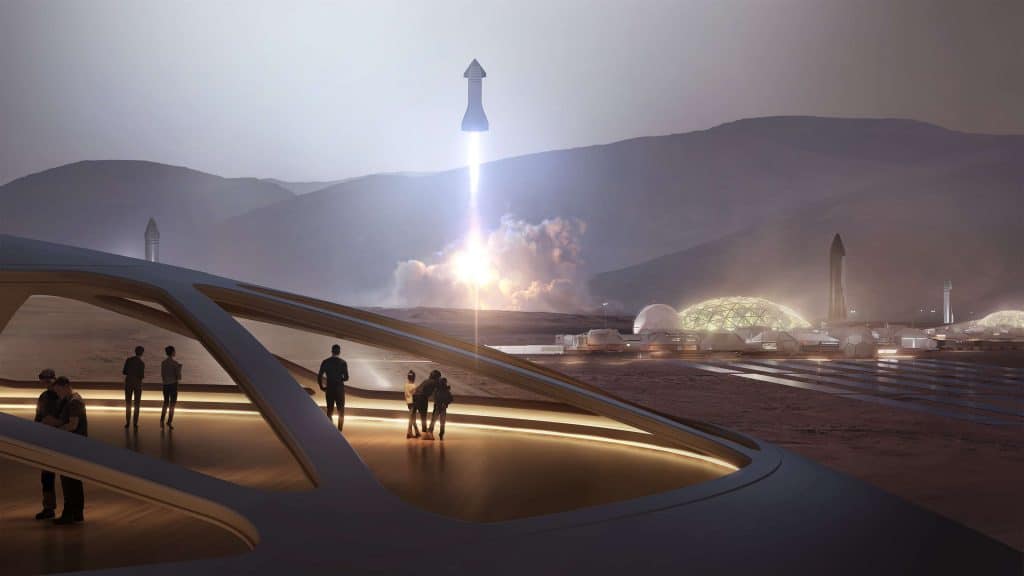Elon Musk has a major goal: to get humanity to Mars before he dies. A lofty goal that he reiterated before a crowd on Monday at the Satellite 2020 conference in Washington D.C.
“If we don’t improve our pace of progress, I’m definitely going to be dead before we go to Mars,” Musk said to the journalists and industry leaders in attendance.
SpaceX, founded by Musk in 2002, nabbed the first of many lucrative deals for the burgeoning rocket company in 2008 when the company was named one of two corporations that would ferry cargo to the International Space Station (ISS). (Orbital Sciences, now Northrop Grumman is the other.)
To date, SpaceX has flown 20 cargo resupply missions to the space station, and very soon will send an upgraded version of the Dragon to ferry astronauts to the orbital outpost as well. But this is just the beginning for Musk and SpaceX.
Musk has his sights set on the moon and Mars. But he’s worried that our current technology isn’t progressing as quickly as it should in order to make Mars happen. That’s evident if you look at the commercial crew program.
In 2011, NASA’s storied fleet of space shuttles retired, and space agencies around the world were forced to rely solely on the Russian Soyuz to transport astronauts to and from space. That agreement would only be temporary as NASA tapped SpaceX and Boeing with the task of building its next-generation astronaut taxis.
Innovation takes time, and after years of delays due to various reasons, SpaceX is on the cusp of launching its first set of astronauts. Bob Behnken and Doug Hurley will board the Crew Dragon spacecraft and fly to the ISS as early as this May. NASA is still trying to iron out the details (like how long they will stay) as SpaceX completes the last two parachute tests prior to launch.
Simultaneously, Musk and SpaceX are working on a massive rocket that will ferry people and cargo to Mars. Called Starship, the heavy-lifter is approximately 400-feet of stainless steel that could transport the first people to the red planet. That is if all goes as planned.
Eagle-eyed onlookers first spotted the towering silver craft in Jan. 2019 at SpaceX’s work site in Boca Chica, TX. That initial prototype was the first step towards reaching Mars and Musk’s goal of building a city on Mars with up to one million people in it, preferably sometime within the next 50 years.
To do so, SpaceX will need a fleet of massive, silvery spaceships. The company is on its third test article, but Musk hopes to ramp up production to one Starship a week by year’s end.
“Unless we improve our rate of innovation dramatically, then there is no chance of a base on the moon or Mars,” Musk said during the conference. “This is my biggest concern.”
Starship will launch atop a Super Heavy launcher. In true SpaceX fashion, both vehicles will be reusable, which lowers the cost significantly. Musk has said that eventually, each Starship mission could cost a mere $2 million.
Starship could launch as early as this year, especially if production rates ramp up the level that Musk hopes. So far, the craft is already booked for one trip around the moon sometime in 2023. That Starship will carry Japanese billionaire Yusaku Maezawa.
Musk also squashed the notion that his Starlink internet service would go public. According to Musk, that endeavor could net his company as much as $30 billion, if it doesn’t go bankrupt. “Guess how many LEO constellations didn’t go bankrupt? Zero,” he said. “We just want to be in the non-bankrupt category.”
So for now, Musk says SpaceX is focused on getting the project off the ground and not spinning it into a publicly-traded company. SpaceX officials have said that the service could roll out later this year in a limited capacity until more satellites come online. To date, the company has launched 300 Starlink satellites, with another batch of 60 set to launch on Saturday (Mar. 14).

